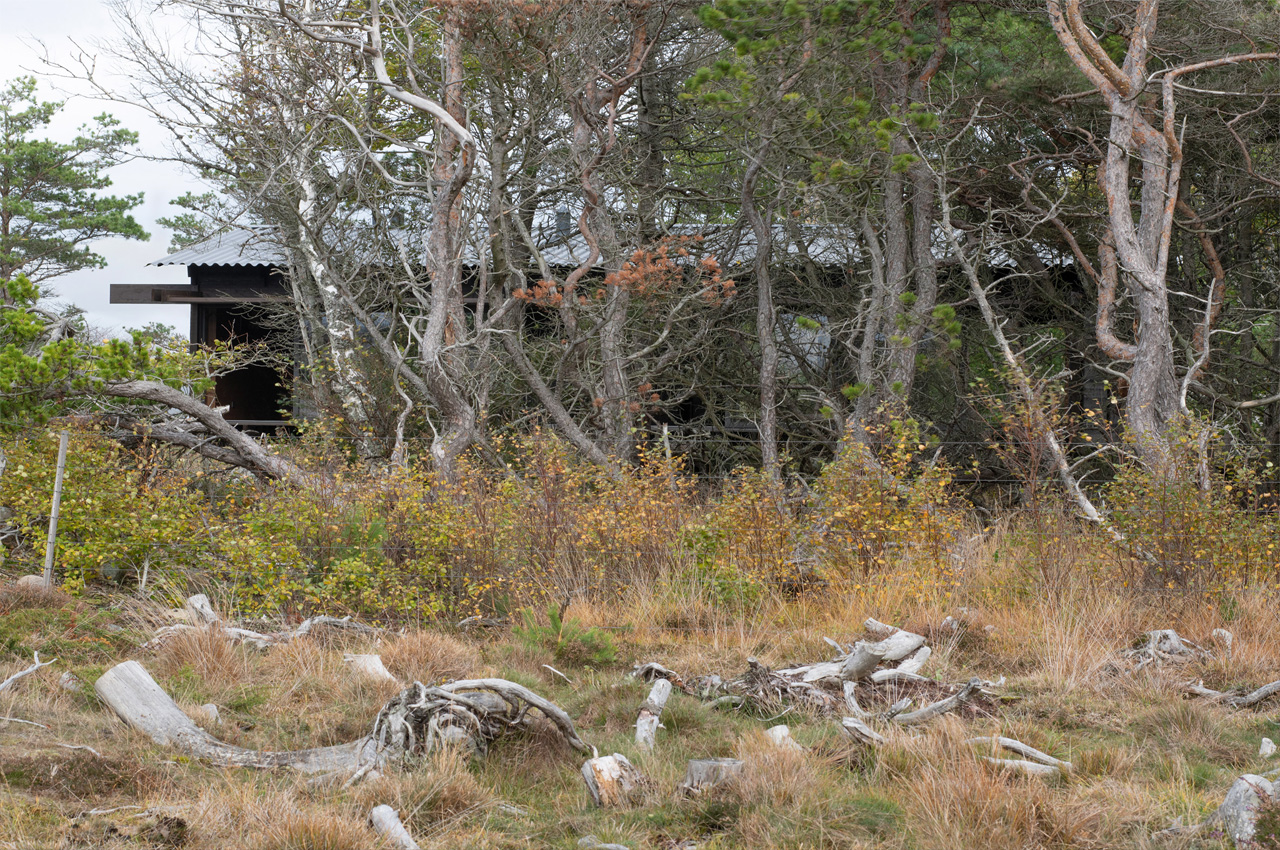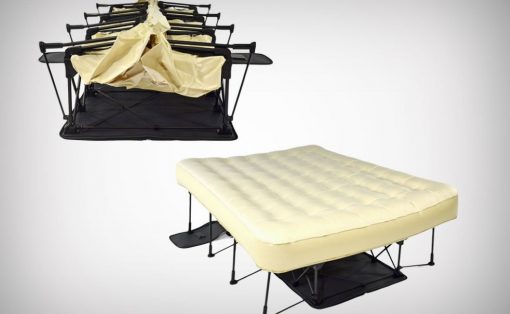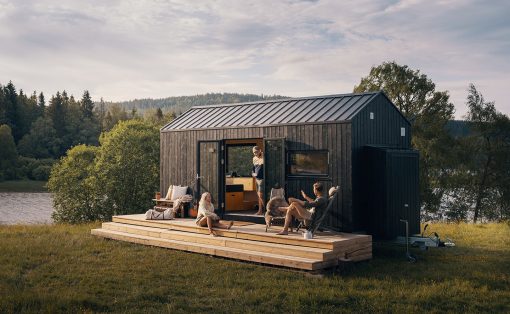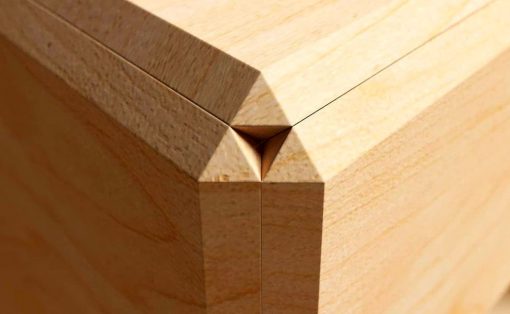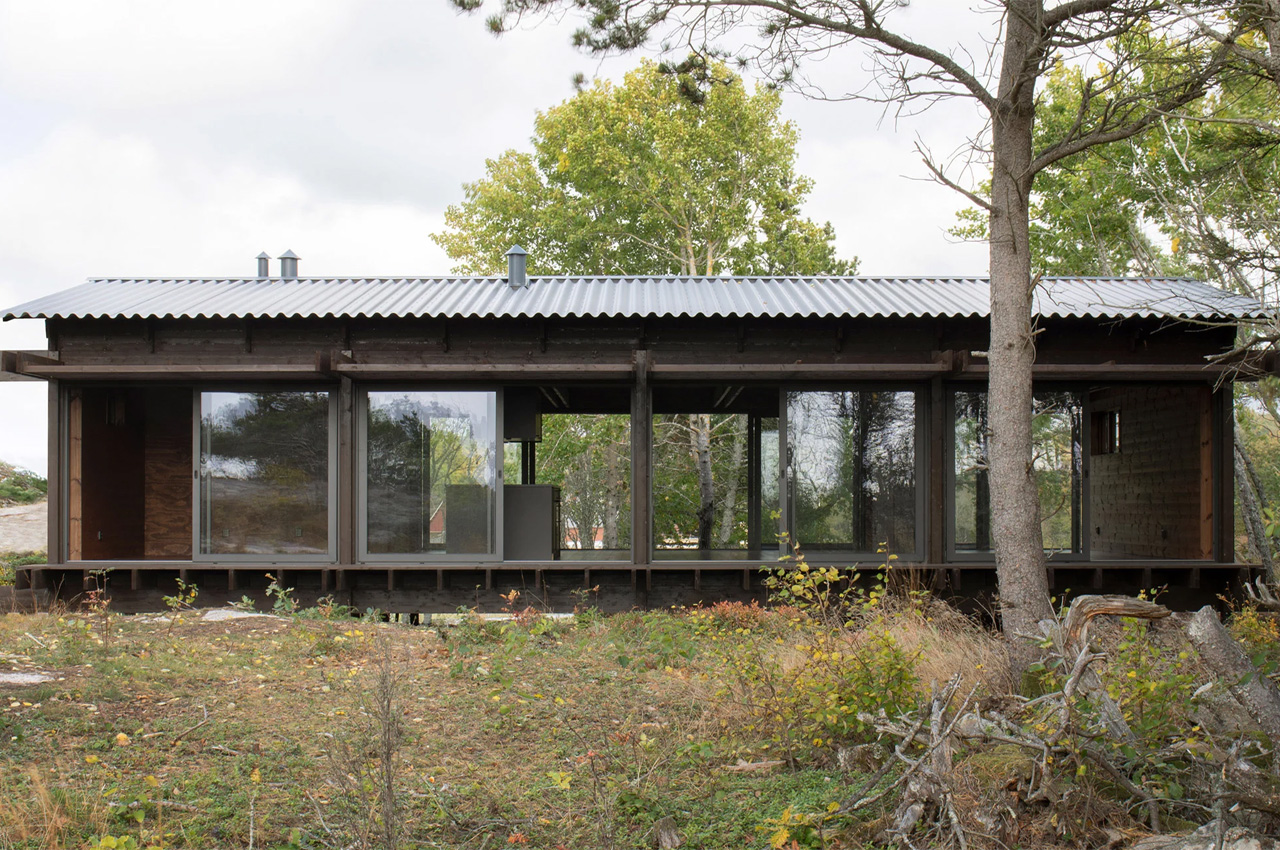
Based in Stockholm, the architecture and spatial design studio HelgessonGonzaga created a minimal and dark timber cabin in the coastal nature reserve Tjurpannan in West Sweden. The home is quite accurately named House Tjurpannan and has been coated in tar, in an ode to the boathouses and jetties located closeby. The home also doubles up as a base for outdoor activities at the nature reserve.
Designer: HelgessonGonzaga
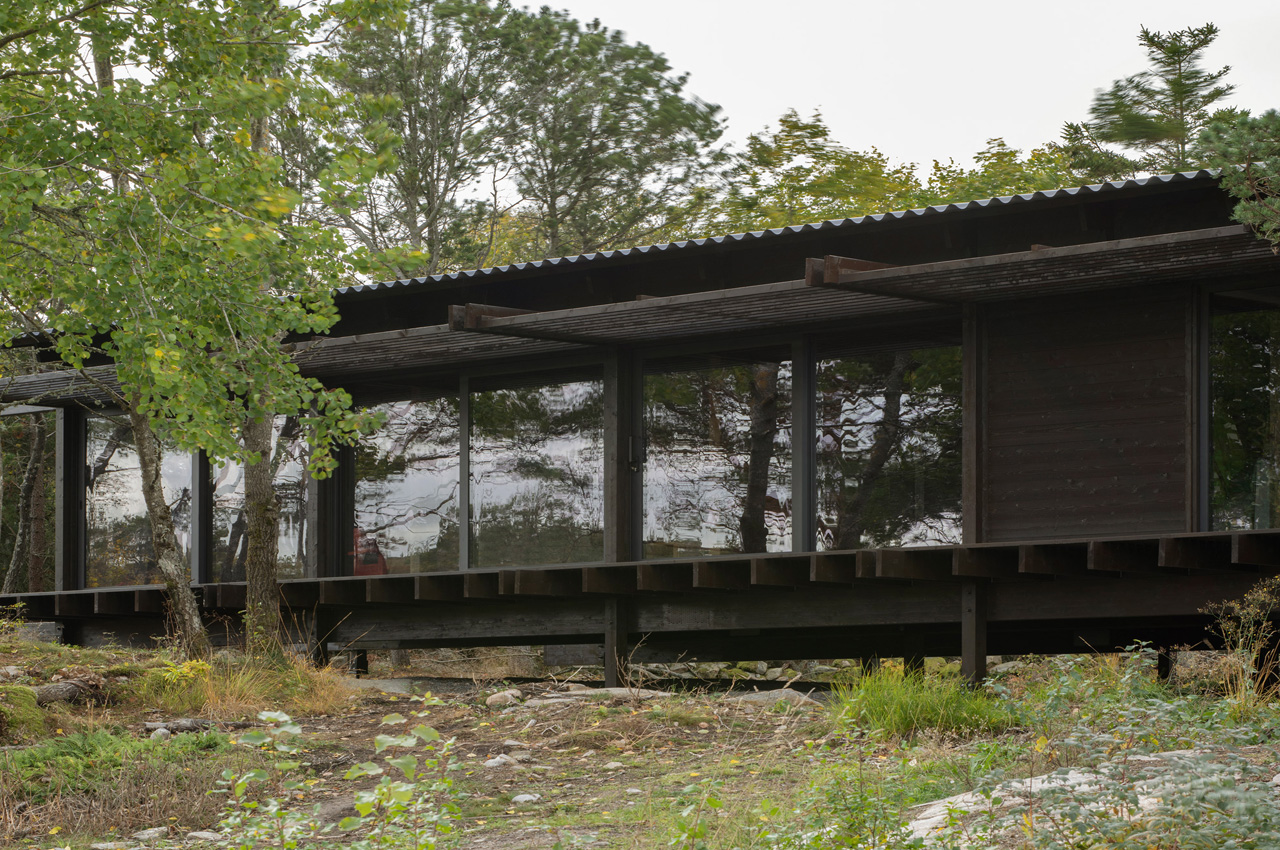
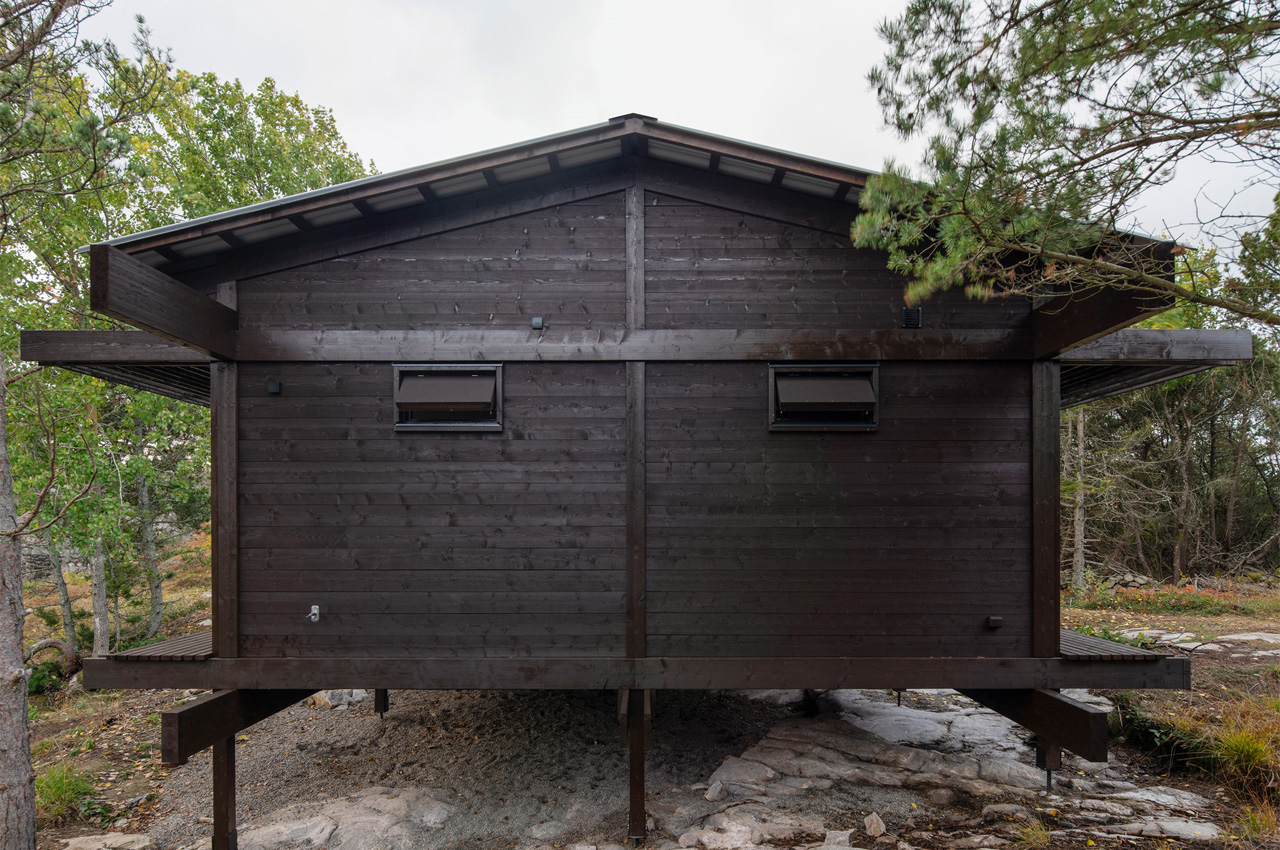
House Tjurpannan functions as an open and flexible living space that occupies 90 square meters. The spacious yet simple home is deeply influenced by the exposed personality of the site, as well as the generous number of boathouses found in the region. The boathouses are positioned above the ground, to mitigate the risk of flooding, and coated in black tar to provide protection against extreme weather conditions, which the home beautifully mimics. “The positioning of the house follows a traditional train of thoughts, paying close attention to topography, direction, and importance of elements in the cultural landscape. The spatial structure suggests the possibility of spontaneous and unexpected use, hence the house could be seen as a luxurious way of camping,” said co-founder Andreas Gonzaga.
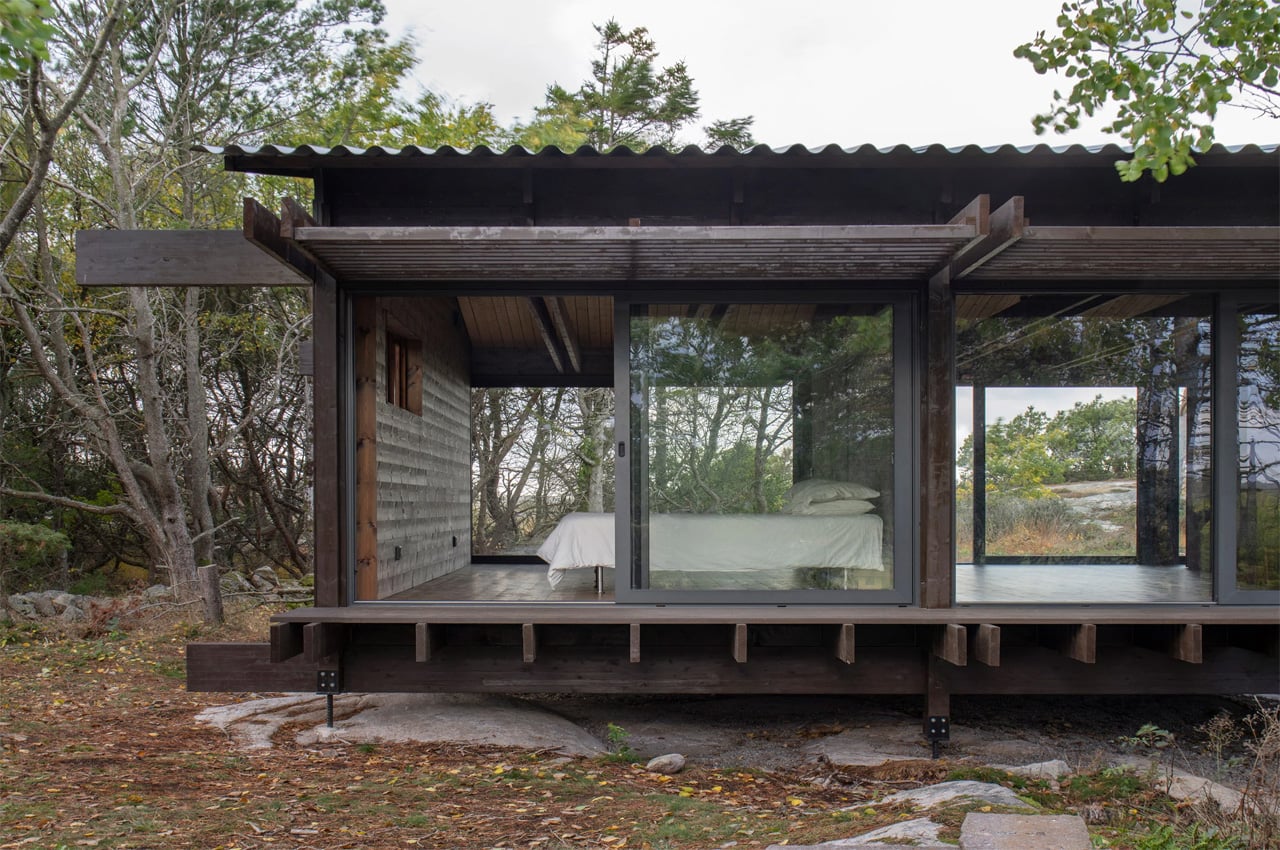
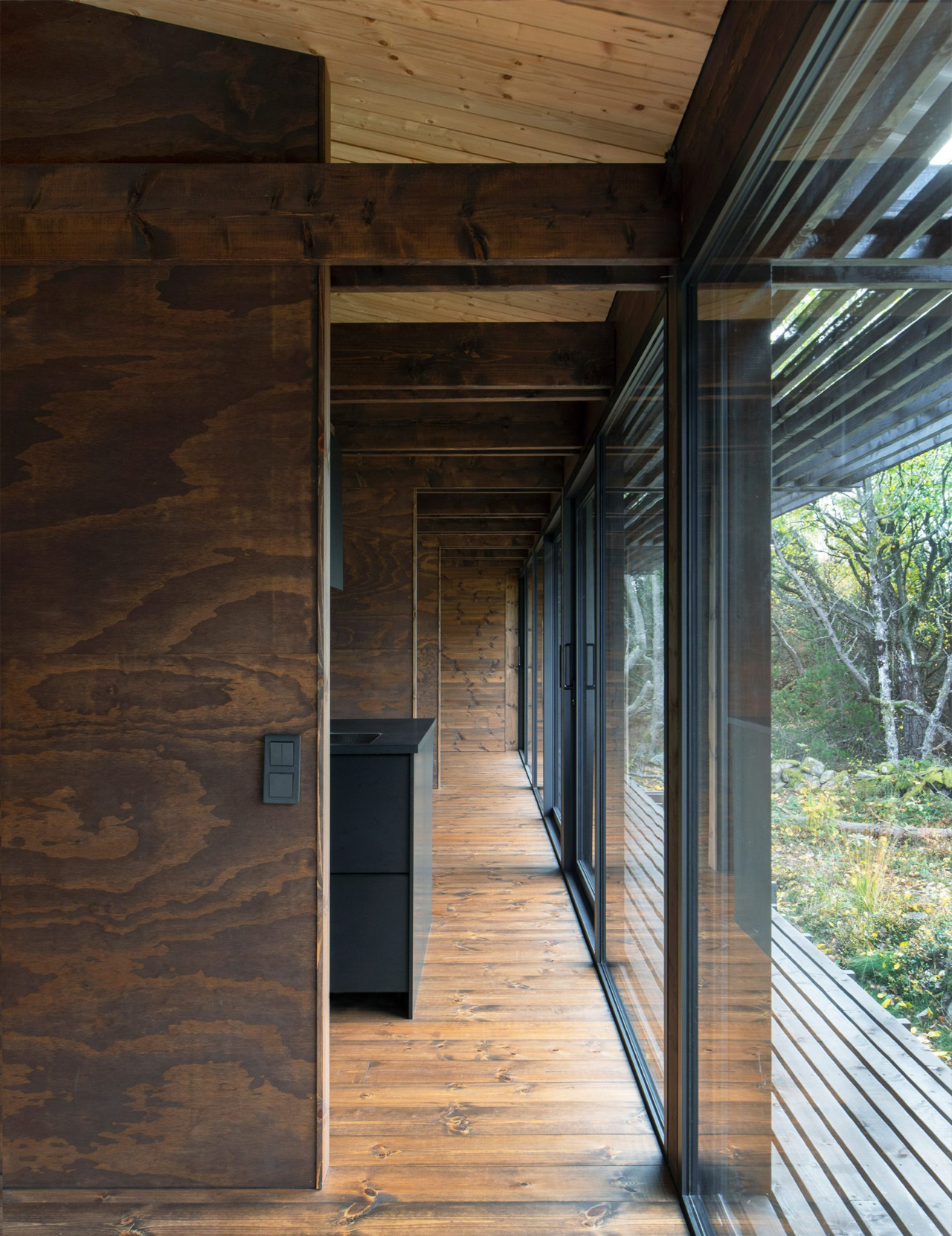
A rocky and natural path paves the way to the cabin and intersects with a wooden ramp that provides access to the raised floor plate. The cabin is marked by massive, full-height glazing, which provides the rooms with stunning views of the landscape, and an entry into the narrow wooden terraces. The various rooms seamlessly flow into one another, all thanks to the addition of simple partition walls. Although it should be noted, that the bathroom has its own distinct and separate space.
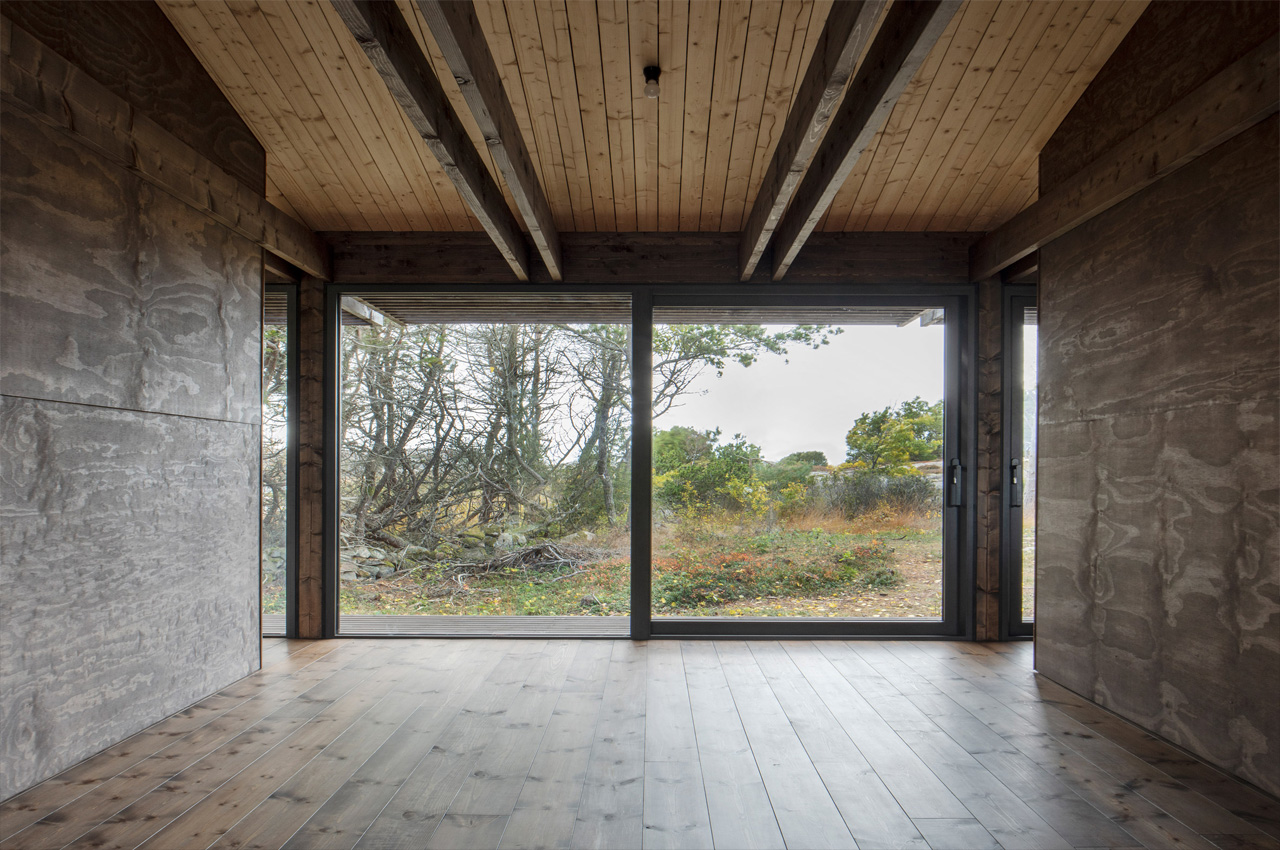
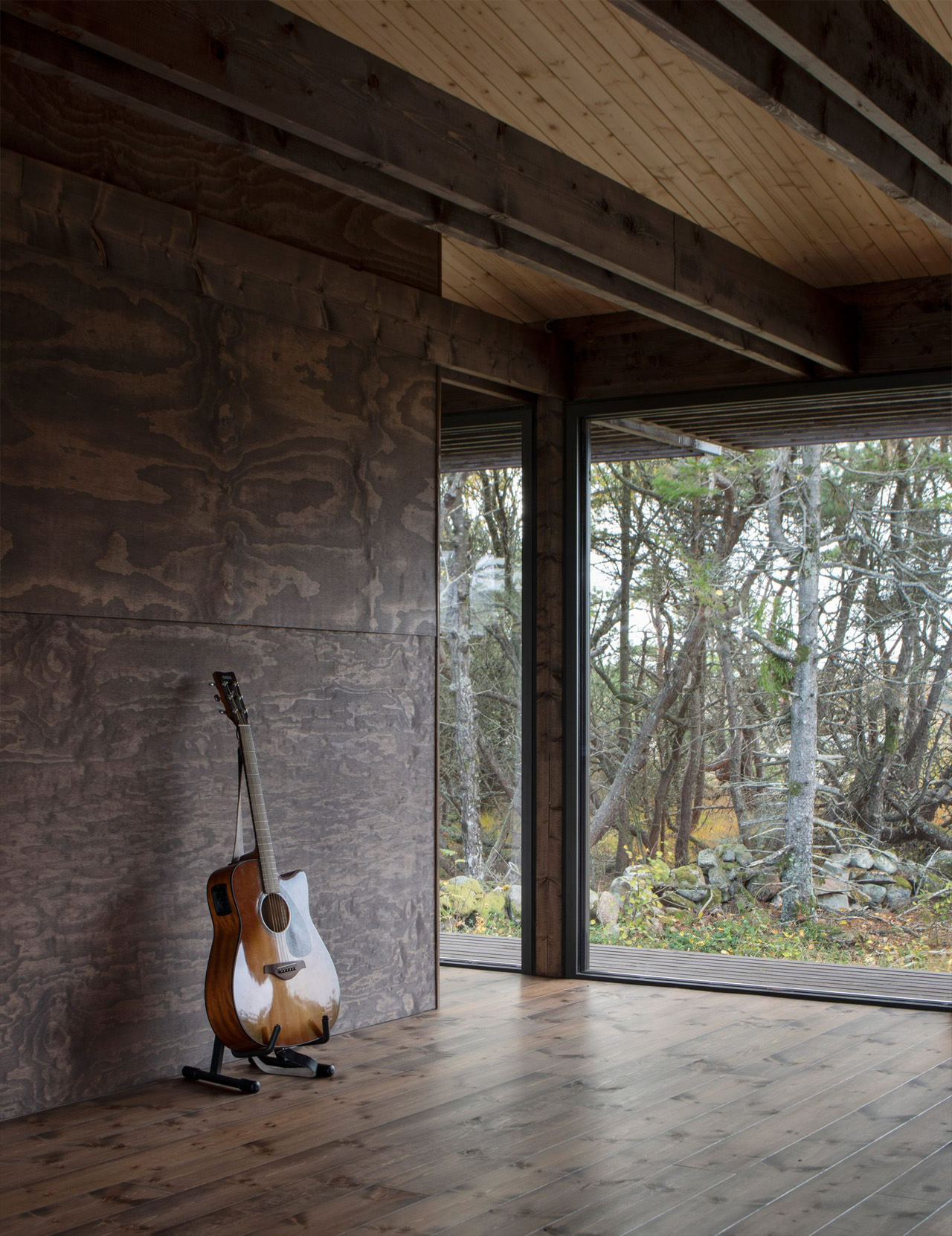
The structural grid of the home has been primarily left exposed and empty and is amped with ceilings lined with planks of pale timber, and walls accentuated with finishes of dark-stained wood, that beautifully mimic the tar-coated exterior of the home. The furniture and fittings in the home follow a dark palette as well, further complementing the wooden interiors of the home.
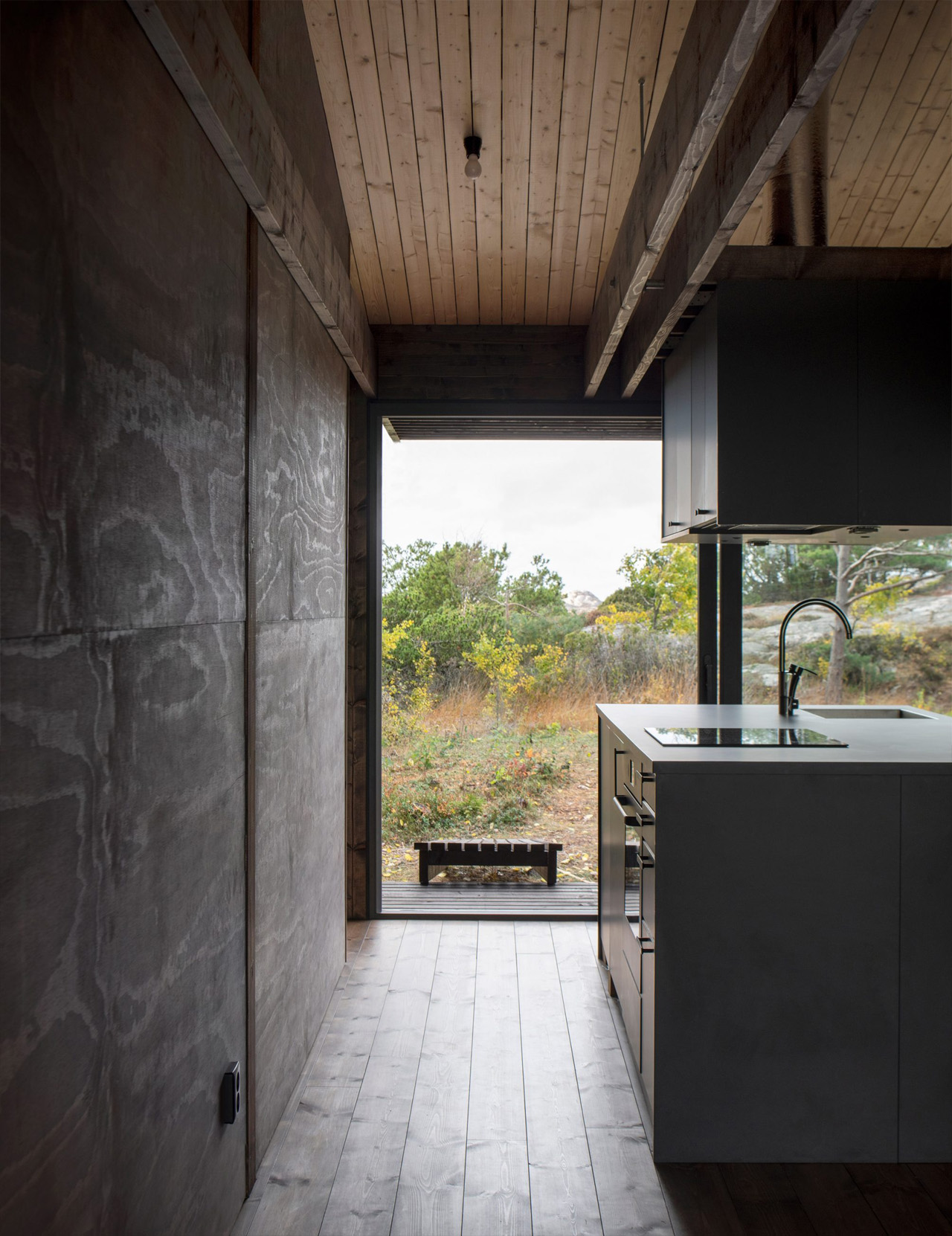
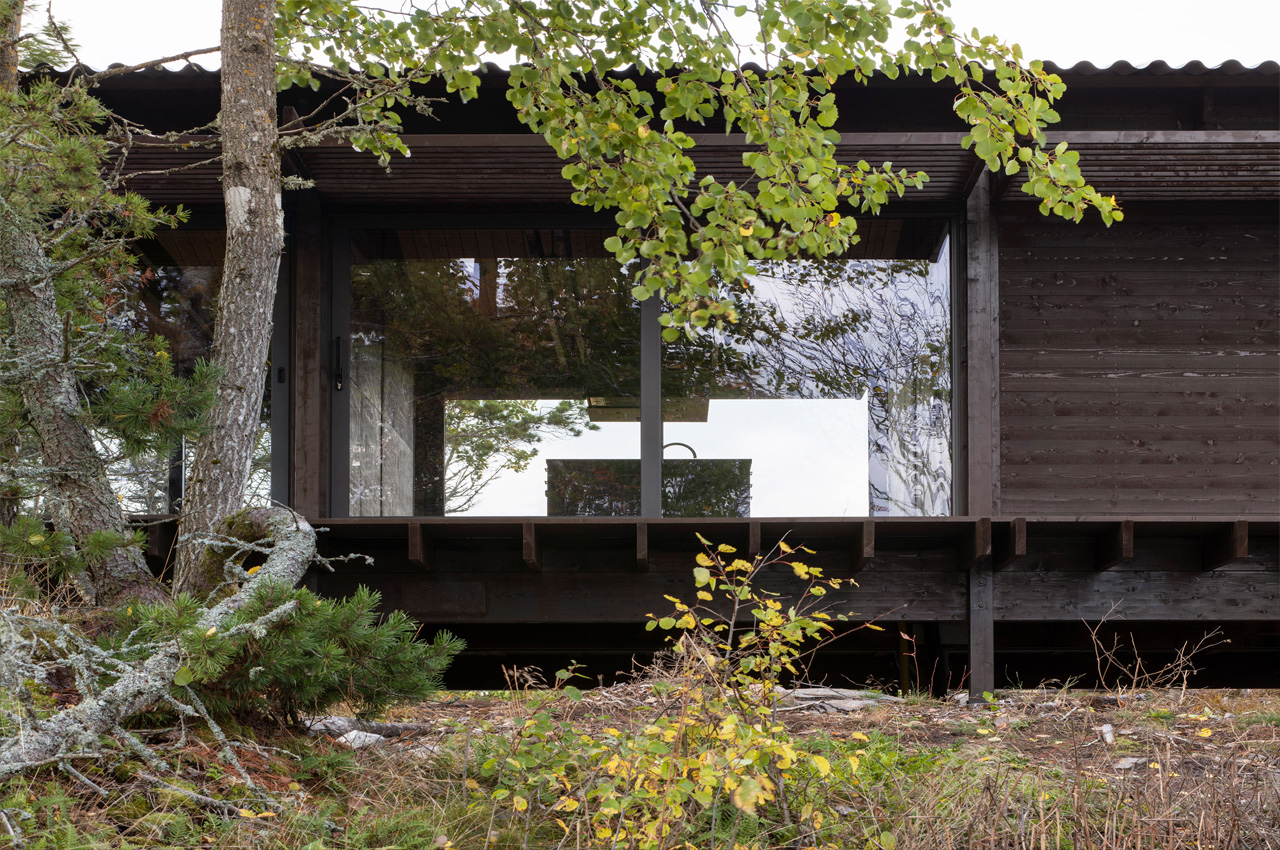
“The overall volume of the house is typical and the structural grid is largely defined by standard wooden elements in the local hardware store. We wanted a dark interior to frame nature outside. By drawing attention to nature in this way, we expand the spatial boundary and connect the house to its specific exterior context,” concluded Gonzaga.
